Note to readers: This post was written in December of 2011. PLEASE do not ask me why I eat ‘this’ or why I don’t eat ‘that’ — as what is shown here does not necessarily reflect what or how I eat today (or more importantly, how you should eat). My diet evolves constantly, due to my constant tweaking and self-experimentation. Over time, I’ll share it here and there, but what I eat is not at all the focus of this blog. I ask that you refrains for pursuing questions about what I eat in the comment section.
Once people start to “get it” with respect to why carbohydrate reduction, or all-out restriction, leads to good things, the inevitable question I’m asked is, “So….what exactly do you eat?” I’m always a bit hesitant to get into this. It’s sort of like asking a pilot, “So…how do you fly this plane?” It’s a great question, but probably the wrong first question.
For many people it’s so overwhelming to contrast what they currently eat – probably a typical American diet of 500-600 daily grams of carbohydrates (200 grams of which are sugar) – with a diet of less than 50 daily grams of carbohydrate, which is what I consume. Remember, what I’m showing you here is what I have been eating for about the last 7 months. For the first 20 months of my nutritional transformation, I was gradually reducing carbohydrate intake from about 600 daily grams to 300 daily grams to 150 daily grams.
It’s really important to understand that carbohydrate reduction is a continuum. There is no “right” amount of carbohydrate to eat. Let me illustrate this with the following “2 by 2” matrix, below (sorry, once a consultant, always a consultant). When asking the question, “How much should I reduce my intake of carbohydrates?” it’s a good idea to start with two broader questions:
- What is my inherent level of insulin resistance?
- What are my goals?
There are technical ways to quantify the answer to the first question, which I will detail in future posts. However, the simple version of determining your inherent amount of insulin resistance is checking how many criteria of metabolic syndrome are present. In other words, are you overweight? Is your waist large? Is your blood pressure high? Do you have elevated blood glucose or triglycerides (these are determined from a standard blood test)? Do you have low HDL cholesterol? For the purpose of this question, even responding “yes” to one of these questions means you are predisposed to being insulin resistant. I was a “yes” to 3 of these questions.
Consider this matrix, and let’s use me as an example.
- How predisposed am I to insulin resistance? One look at a picture of me in my non-lean state, coupled with an understanding of my family history, and it’s clear I didn’t hit the genetic lottery with respect to insulin resistance. Hence, I am towards the right of graph.
- What am I optimizing for? Some folks want to lose 15 pounds. Others want to have fewer swings in daily energy level, or stop taking their blood pressure medicine. In my case, I want to maximize as many variables as possible: I want to be as lean as I can; I want to cure my insulin resistance; I want to be sure I never have a single symptom of metabolic syndrome; I want to do everything I can to avoid cancer and Alzheimer’s disease; I want to be metabolically flexible. Hence, I am towards the top of the graph.
As you can see, based on my poor genes and lofty goals, I find myself in the upper right square, which means I need to adopt the greatest amount of carbohydrate restriction. My wife, in contrast, has good genes, coupled with high goals, placing her in the upper left box. As a result of this combination, she does not need to restrict carbs as much as I do. If her goals were even more modest, she could get away with very little reduction in carbohydrates – probably just reducing sugar without much reduction in starch.
Below is a picture of a few of the foods you’ll typically find in my refrigerator. Note that on average I consume about 4,000 to 4,500 calories per day. I get this from approximately 400-425 grams of fat, 120-140 grams of protein, and 30-50 grams of carbs. In addition, there are a number of supplements I consume daily, which I describe in the table below. In future blog posts I will go into greater detail as to why I consume each of these supplements, but for now I’ll give a very quick explanation.
Finally, note that under no circumstance do I ever count calories (for the sake of limiting them). When I was first transitioning into ketosis I did need to count how much carbohydrate and protein I was consuming – anything over about 50 grams of carbs and 150 grams of protein makes it difficult to generate sufficient ketones – but I do not ever count calories for the sake of restricting them. I eat when I’m hungry. I don’t eat when I’m not hungry.
Regular supplements I consume every day
*I will be writing a great deal about the role of omega-6 and omega-3 fatty acids in our diet in subsequent posts. However, if you want a quick (albeit high-level and not overly nuanced) overview of the topic, take a look at what Dr. Andrew Weil and Livestrong have to say about it.
One last point on supplements – I do not take a multivitamin at this time, but I am looking into it a bit more closely. My concern is that 1) they may not be necessary when you remove glucose from your diet (I’ll write about why in the future), and 2) they may actually do direct harm, as a result of contaminants.
Ok, at long last, here is a list of what I ate over the past 5 days (excluding water, still and sparkling, which I consume about a gallon of each day)
Wednesday
Breakfast: “Fat shake” (In a blender: 8 oz heavy whipping cream, 8 oz sugar-free almond milk; 25 gm sugar-free hydrolyzed whey protein, 2-3 frozen strawberries)
Lunch: About 4 or 5 oz of assorted cheese (Gouda, Swiss, Manchego), 2 or 3 oz olives, about 4 oz of particularly fat salami and pepperoni
Late afternoon: About 2 oz of mixed nuts (almonds, walnuts, peanuts), large latte (latte made with heavy fat cream instead of milk) at Peet’s
Dinner: Garden salad with olive oil (lots of extra oil) and balsamic vinegar dressing, about 6 oz grilled salmon with a lot of butter and lemon juice
Thursday
Breakfast: Scrambled eggs (6 yolks, 3 whites**, with added heavy fat cream) cooked in coconut oil, 3 or 4 sausage patties (be sure to look for brands not cured in sugar).
Coffee with homemade whip cream (heavy fat cream hand whipped)
Lunch: Half chicken (thigh, breast, wings) with lots of skin; about 2 oz of Gouda and aged-cheddar
Dinner: Wedge blue cheese salad with bacon; 12 oz prime rib with lots of butter; 5 or 6 pieces of asparagus coated in butter
Coffee with half and half cream, 2 cups (the restaurant did not have heavy cream, so I had to settle for half-and-half)
**The reason I typically minimize egg whites, at least when making my own eggs, is to ensure I keep protein intake under about 125 grams per day. Ketosis is pretty easy to attain if one is eating, say, 2500 calories per day. However, given my caloric demands – and the requirement that I keep protein intake limited – I really need to go out of my way to ensure I’m not eating too much protein. I will be writing about this in much greater detail in a future post.
Friday
Breakfast: Whole fat latte at Starbucks (made same as above), scrambled eggs (about 4 eggs), bacon (high fat pieces), slice of Swiss and slice of cheddar (since I was eating in the airport, the scrambled eggs were made “normally,” not with the additional fat I use when making my own)
Lunch: About 4 oz of especially fat salami and pepperoni, about 2 oz Parmesan cheese
Dinner: Ground beef sautéed with heavy cream, onions, broccoli, and melted cheese
2 large cups of decaf coffee with homemade whip cream (heavy cream whipped with a touch of xylitol)
Saturday
Breakfast: Scrambled eggs (6 yolks, 3 whites, with added heavy fat cream) cooked in coconut oil, 3 or 4 pieces of especially fat bacon (not cured in sugar), about 3 oz of cream cheese
2 cups of coffee with heavy cream
Lunch: Tomatoes with basil and mozzarella and balsamic vinegar and olive oil, about 2 oz raspberries with homemade whip cream
Dinner: Leftover ground beef sautéed from previous night, salad with homemade cream dressing (whole fat Greek yogurt, olive oil, basil, blue cheese, garlic)
1 cup of decaf coffee with homemade whip cream
Sunday
Breakfast: Omelet (6 yolks, 3 whites, coconut milk, sautéed onions) cooked in coconut oil, 4 or 5 pieces of the fattest bacon I can find
2 cups of coffee with heavy cream
Lunch: Plate of assorted cheeses (aged Gouda, Swiss loaf, aged Parmesan – about 3 oz), about 2 oz salami, about 1 oz olives
Dinner: Cream of mushroom bacon soup (heavy cream, chicken broth, shredded Parmesan cheese, mushrooms, chopped bacon, garlic, butter, chopped papers, various spices), leg of lamb (baked in sauce made of red wine, balsamic vinegar, diced tomatoes, garlic, and a lot of spices)
2 cups decaf coffee with homemade whip cream (as above)
So there you have it — 5 days in the eating life of Peter Attia. This may look a bit strange, relative to what you may be eating now, but remember, I’m at the far end of the spectrum – i.e., nutritional ketosis. You may just be starting your own journey of reducing carbohydrates, but I hope this gives you an idea of what I eat. In particular, what probably stands out is:
- I go to great lengths to avoid sugar which, unfortunately, shows up in virtually every highly processed food.
- I eat zero starch (e.g., bread, cereal, rice, crackers, pasta).
- I consume only modest amounts of fruit (one serving per day, at most, and only in the form of berries, which contain the least amount of fructose).
- I eat vegetables, but primarily because they are a great way to get more fat (e.g., high-fat salad dressings, butter), not because I “need” them.
- I go out of my way to eat as much fat as possible, especially monounsaturated and saturated fat (the only fat I avoid is omega-6 polyunsaturated fat).
- I have a few “go to” meals that I eat several times per week. I do this because I really like them and it’s quick and easy make them. Yours need not be the same!
Photo by Glen Carrie on Unsplash

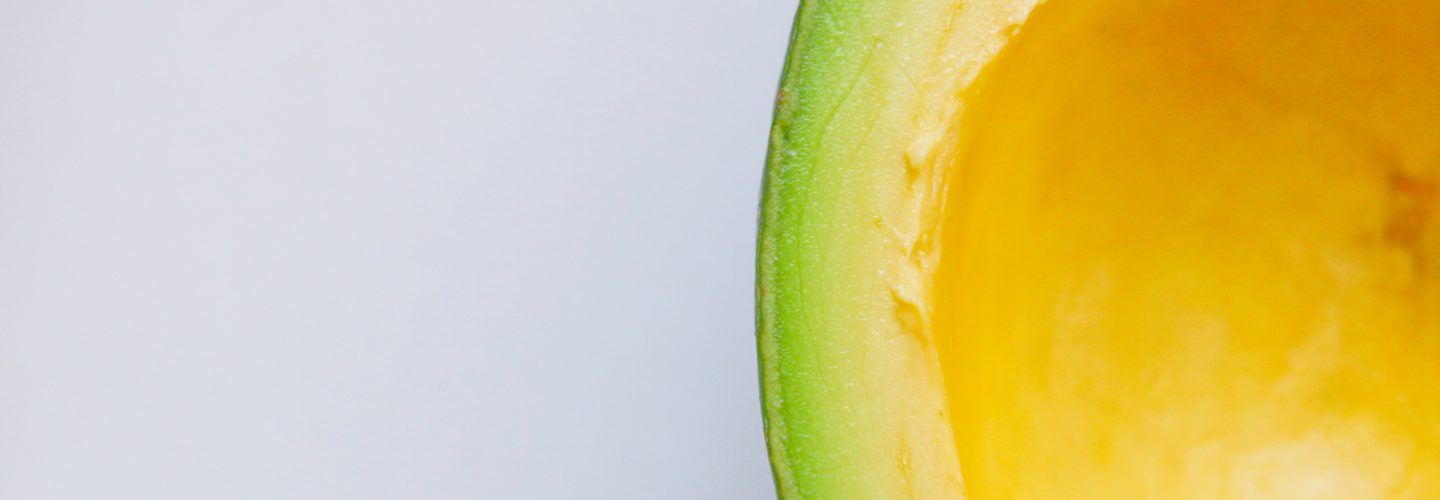
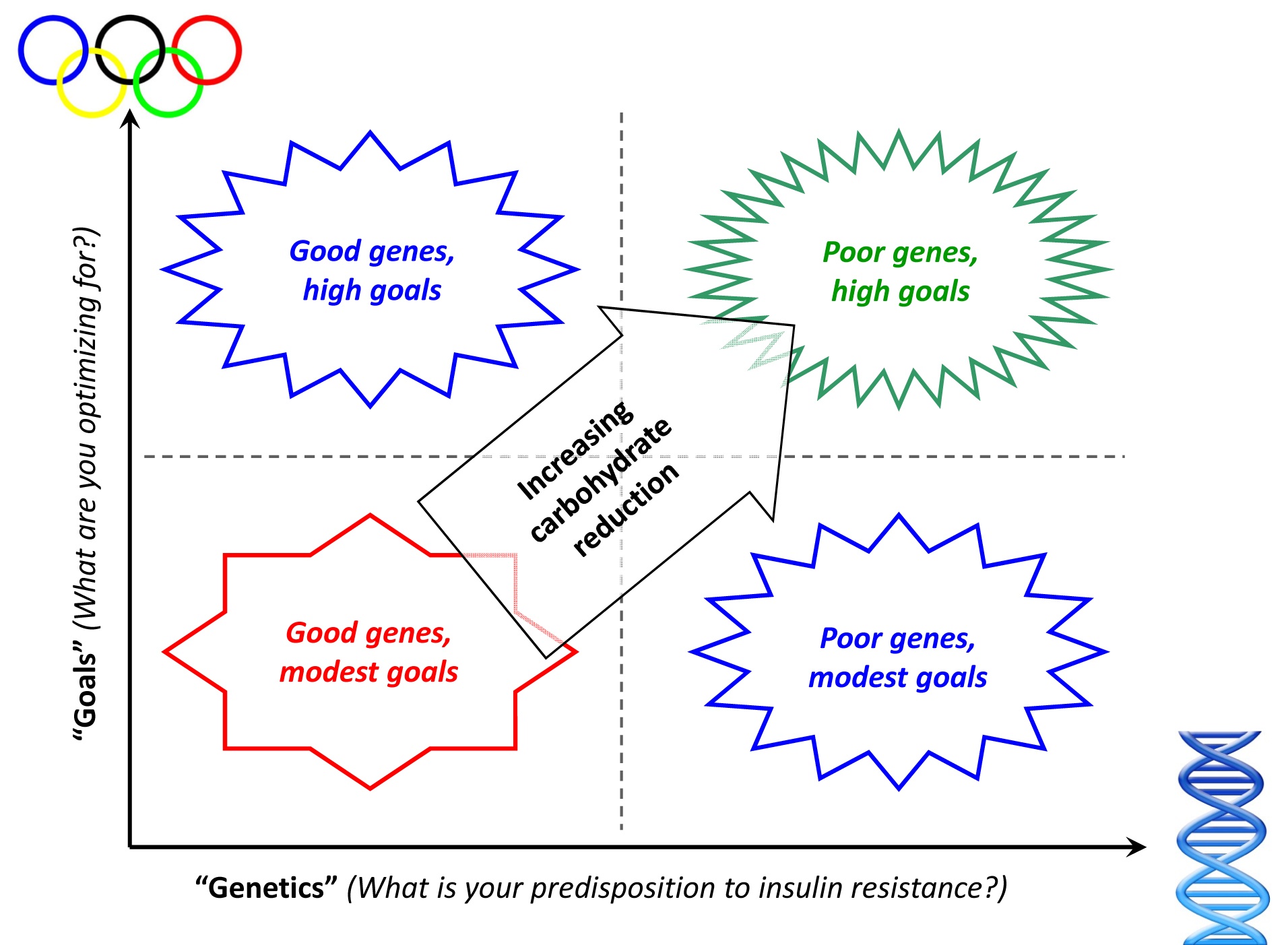

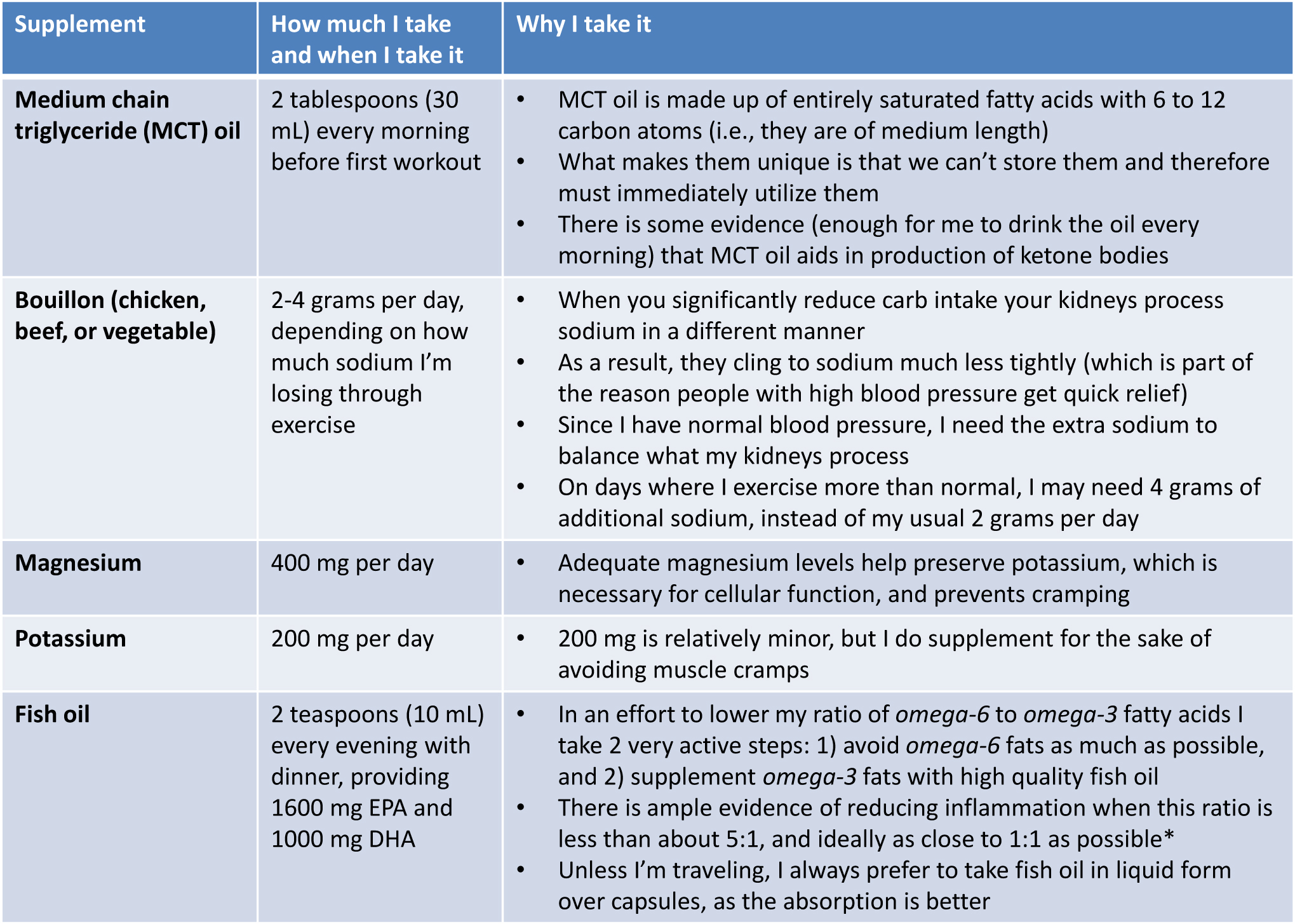
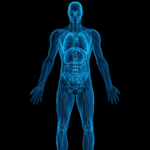


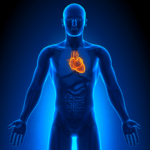
What do you mean you don’t calculate or titrate to that
I do not calculate or pay attention to that ratio.
What is the minimum maximum amunt protein that should be consumed for a 1900caloie diet for someone that is moderately active is it okay to get most of it from whey protein or should you get it from meat I try to get 88g but usually only half that amount whats the most carbs you should consume if most of your fat comes from the mcts is it safe to eat a extrememely low number if you are on insulin but ketosis from diet with # carbs in the around 70g blood sugars are normal are low
More a function of body mass and activity level. A general rule is between 1 and 2.5 gm/kg.
aRE there any vegetables fruits that are better for the mitochondria to work with that aren’t high carb the disorder I have one of the treatments recomended is the ketogenic diet that why I have certain amount fats carbs etc caloriees the dietician wasn’t a keto dietician and just basically said the numbers I came up with were good but was wondering if there are fruits/vegetables that work like the mct oil and can go to mitochondria bypassing some things are do they already work this way in the body I function better with the mcts than the lcts because of how the body uses them are there any greens that are easier to break down digest than cabbage
when you mention body mass do you mean weight or are you refering to thing like bone size muscla mass water weight and fat composition
Depends what context.
does the depends on what context go with the first or second question
Hi Peter, very interesting all that you are sharing about this diet. I read that you help people with diabetes as well. I’ve had type 1 diabetes for 15 years now (I’m 37 now) and I’ve read lots of books about how to reverse diabetes. One of them is The pH Miracle for Diabetes, by Robert O. Young.
Dr. Young theory is that almost al meat, dairy, eggs and most of grains and cereals puts the body into acidic state which then is the cause of most know diseases, one of them insulin resistance and diabetes.
His diet contains many fats as well, but plant based, like avocados.
Since you eat basically meat, eggs and dairy, what is your take into the acid/alcaline theory, especially for diabetics?
Yesterday I bought Dr. Bernstein’s book, but until I get it I would love to know what you think about this.
Thanks a lot
Charlie
The food-acidity theory (never forget, that’s all it is right now — there are no RCT data supporting this idea) is interesting, but it sort of speaks the “wrong” place of acidity (the serum). What we’re trying to avoid is acidity at the cellular levels, which is not what they are measuring. Bottom line, we need real experiments to determine if this is correct or not. No amount of speculation or anecdote will suffice. Bernstein’s book is great.
Well…………….. I would ponder the delicate nuances of the acid/alkaline theory – but I’ve got some bird chasing to do –
Dog out
Great article. Just come across your site.
Nick J
Fantastic Article indeed! Hi Peter,I have been going at this for about 5 weeks sub 20-25 grams of carbohydrate.I just wanted to let you know i am going at this from an elite powerlifting perspective and am paying close attention to peak strength. i have been out of the sport for some time and recently decided on a comback within the last year to try and win the 2013 raw nationals for the USAPL / IPF for the 67.5 kilo class and after a year of training i am actually happy to report maybe a 8% peak strength deficit at this time since switching to a keto diet(compared to best efforts this training cycle). I feel i am closing the gap and will return to baseline soon. At a competitive body weight of 148 i achieved (400/550/535 bench/squat/dl) and i believe i will add to the body of knkowledge especially for elite drug tested powerlifters if i can get back to those numbers after full adaptation and continued training.I must admit i felt very weak in the beginning but have decided to continue and seem to be back on track Thanks for your work on this subject! – Brian
Holy cow! You are one strong dude! At my strongest (body weight of 160), I could not do that.
Hi Peter, im still quite far from my best ,years ago, but am currently arounf 355/ 450/ 475 and about a year into this period of training. I incorporated creatine within the last 5 days and seem to feel quite a bit stronger(maybe just a placebo effect) and am not sure if that is a result of better hydrated muscles or from the actual creatine /atp mechanism?I ‘ve kind of understood insulin’s role of with creatine and wondered your thoughts on this kind of supplementation under a keto diet since insulin should be low. Thanks in advance – Brian
Not sure creatine supplementation impacts insulin sensitivity.
Also , my current bodyweight is at 165 and that was the initial reason i wa very interested in this diet, but have scince become more interested in the multitude of reasons why this diet is beneficial. The original reason was to maintain a body weight somewhere in the lower 150’s so 148(67.5) would not be such a dramatic weightloss to make weight risking too much of a strength drop at time of competition. Thx – Brian
What food or beverage is good to consume if your sugar drops ex to to 54mg/dl for thw blood glucose reading I know sugar isn’t allowed but would a small amount of juice without added sugar and a few nuts be ok to bring the sugar back up or would something like a piece of candy made with stevia splenda or one of the sugar alcohols works just as well for this how long should you wait before rechecking I start getting the symptoms of low sugar when my get down to 100mg/dl
Any carbohydrate will raise blood glucose levels.
I’ve been looking for a sample ketogenic diet everywhere and I finally found yours. This is great, however, I’m intolerant to casein in dairy, I definitely don’t do coffee, and nuts are out of the question for me for now as well, so I can’t follow your meal plan!
I recently (last February) got over C.Diff and since then my gut just hasn’t been the same. I’m only 23 years old and although I should be bouncing back fairly quickly, I keep hitting walls trying to follow a very strict GAPS, low FODMAP, and paleo diet.
To experiment with a different approach, I’ve actually eliminated all fibers for a week to see if it would help my gut heal. Although I saw some bloating and cramp reduction in the beginning, I feel like I’m eating way too much protein. This plan is definitely not working as well as I thought it would and I’m ready to take on yet another approach.
Ideally, I’d like to go ketogenic and instead of having to follow frustrating and time consuming ratios that would eat up way too much time spent measuring food groups each day, I would like to follow sample diets such as the one you posted.
Is there any way you could post something similar without the dairy and nuts? It would be greatly appreciated. Thank you!
Have you looked into (no, I’m not making this up), fecal transplant? I personally know people who have undergone this procedure status post GI infection and it’s been transformative. I suspect your gut biome is so far out of whack that this is probably the cause of much of your difficulty.
I have actually 🙂 but not many practitioners perform the procedure unless the patient has a recurring/persistant C.Diff infection. Since I’m infection free, and have been for quite some time, I don’t think many Doctors would jump on that request. I agree with you, it’s completely out of whack and I seem to be sensitive to probiotics too so orally supplementing some strains is difficult. I just added L-glutamine and bovine to my diet so I’m just going to keep trying to adjust certain things and hope my gut improves. My GI suggested Zantac for the bloating months ago and I’ve been resisting. Thoughts?
Reach out to Chris Kresser directly. Chris knows more about this treatment in absence of active infection than anyone I know.
Chris is great. I will, thank you!
In Chinese there are lots of herbal food which can help you keep in good healty in your daily life.
I think you can add some topics to the blog.
Hi Peter,
Thanks for posting this. I am a slim guy trying to gain weight and muscle by working out ( 5’9 / 155lbs ).
I’d like to get up to around 3000 calories+ per day (I’m probably only eating 2000-2200 right now).
However, I have some limitations:
1. I have awful acne, and would like to try to eliminate dairy if possible. This rules out whey protein and other creams, which make up a huge % of your calories. What would you substitute in to get enough protein and fat?
2. At the same time, I have to stay relatively low on carbs. My a1c was 5.5, and my post-meal numbers range from 110 (low carb) to 120 (medium carb) to 140-160 (high carb).
In short, I need a 3000 calorie diet that is low-carb to address my insulin sensitivity and yet avoid dairy for my acne issues!
Use non-whey protein. There are a few egg-based powders. Check out part II of this post where you’ll get some other ideas. Very easy to get 3000+ calories with minimal dairy, if that is your goal.
Two Main Cauase of Acne
1. ………… The Man Cultured Yeast added to baked bread —- Stop eating bread and other sources where this yeast is added for a month and see if your acne improves –
2. …………. Cooked plant foods that the bacteria in the large colon can not digest – Stop eating cooked plant food for a month – these two steps should help your acne
The mechanism where-by man cultured yeast produces acne is something beyond my understanding – but yeast has a remarkable ability to reproduce it-self – all it needs is undigested food in the large colon or massive amounts of the stuff added to bread
Dairy in any form has no inclination to produce acne – the probiotics in milk based products help reduce yeasts in the body
Natural fungus like sources of food – mushrooms -vinegar-brocoli- also do not produce acne
Any suggestions for additional sodium besides boullion cubes? I’ve used then in hot water and drank them down but my wife claims I smell afterward because of the onion and garlic in them. She says it comes through my pores as well. I wish I could get them without the added garlic and onion but I guess that would defeat their intended purpose. I am a runner and I know I need the additional sodium when running. Thanks!
Lots of comments in this post about various salts one can use in lieu of bouillon.
Make your own chicken or beef stock and drink that with as much salt in it as you like. Cook chicken carcasses or whole chickens with carrots, celery and onion for an hour to an hour and a half. If you make beef stock, roast the bones first for an hour at 350 degrees F. You can buy beef “soup bones” from a butcher or a large grocery that processes its own primals. Almost all commercial bouillon and chicken base or beef base have soy protein in them for “texture.”.
Dear Dr. Attia,
Fantastic website! I just got a major dose of reality when my husband and I recently applied for additional life insurance. My husband’s blood work came back with some scary numbers. He 37 yo, 5’6″ and 170lbs. His cholesterol was 320 and triglycerides were 530!! LDL’s were unreported because apparently they were off the charts! Currently, he is pretty sedentary due to work, fellowship and toddlers (life pretty much). My question to you is, do you think a low carb, high fat diet is appropriate/safe for him? Once he is done with his fellowship, he plans to exercise but that won’t be for another 11 months, and right now exercise is not his priority and he would rather adjust his diet in the mean time. Thank you and please keep up your excellent work!
Wow. The TG of 530 is very high, as you’ve figured out. Hopefully this site can help. Part IX of the cholesterol series might be a good glance.
Is it safe to use 10,000 grams l-glutamine the other supplent i use are 10g l-arginine 100mg riboflavin 2000IU vitamin D3 ? dosage calcium magnesium CO-Q10 200-400mg l-carnitine 1000mg multivitamin 7-9tbsps mct oil oil is spread over 6 meals with 2 tbsp at breakfast do you recommend any other vitamins that aren’t listed above what would be good to use in place of a fish supplement if you can’t tolerate these
Sincerely
Carla
Hello Peter,
I am already fairly thin, 5’3″, 115 lbs and about 22% bf. I train about 5x per week. I want to be lean, for me around 15% bf. I could easily consume about 2500 calories, mostly from fat. Heavy cream and butter are my best friends. I am currently eating about 100 grams protein for my height, which could be why I am not seeing the results I want. I am worried about losing muscle if I were to eat any less protein. What are your thoughts on grams protein for someone my size? Also, I know it says you don’t count calories, but everywhere I look, it blames keto fat loss stalls on eating too many calories. Could it be due to the fact many might find themselves consuming much more protein and carbs as they might have guessed?
Thank you for your time! I love reading your blogs every chance I get.
No hard rules. Depends on many factors. 100 gm of protein for someone your size is certainly adequate in quantity. Quality and timing matter, too, of course.
HI Peter,
Could I ask what you mean/suggest by “timing matters”? I wanted to ask you the last time you mentioned it – I believe it was also in relation to protein intake.
Thank you,
Nina
Too much to get into, but BCAA during a workout and glutamine post-workout, though only 10% of your daily protein, may play more role in anabolism than the other protein. Absolute amount is probably only one (crude) variable.
I am very Grateful for Gary Taubes , Peter Attica and Mark Sisson.
This is my story.
My name is Robert Patocchi. I am going to turn 57. Fourteen months ago I weighed 255 pounds. My body fat was over 30%. My triglycerides were over 1500. I wanted to exercise but had no energy. At that time I thought Dr. Atkins a nut. I then listened to an audio book. ” Good Calories Bad Calories” by Gary Taubes. I went on Atkins and into ketosis and lost 25 pounds in two months. I felt more energetic so I began to lift weights and swim. I felt good so I decided to compete –. I had not competed for 33 years. When I added anaerobic interval training exercise to my workouts I added more carbs to my workout 60 to 110 grams a day. It was mainly fruit and vegetables. I am thankful to Mark Sission and his book ” The Primal Blu Print. ” Now I do eat rice and bread sometimes and I drink milk. I also emailed Peter Attia. He is great guy and answered my questions. I stared eating only once a day in the evening. I eat a lot of saturated fat. When I went to the doctor my triglycerides were under a 100! My cholesterol improved. My body fat is 13% now and still dropping. I weigh 200 pounds and I did good in my swimming competition for Pacific Master Swimming for not competing for 33 years. I was almost as fast as some of those that I knew 36 years ago who had not stopped competing for years. Some had not stopped racing since collage. . Maybe this year I will beat them. I am a sprinter but I also did ok in a open water swim. I enjoy my life more now. I can hike, play work harder now. I have two kids , one 11 and one, so this is even more important. I am very thankful for these guys.
Robert, your story makes my month! (not just my day) — Congratulations.
Wow, your blog has been a great resource to us during the past few days, Peter! We’ll be implementing a lot of the things you laid out here and on the rest of your site.
In a different post, you mentioned that this one is getting more traffic than many other pages of your site combined. In Google, I actually found this post instead of your homepage, so maybe that’s why 🙂